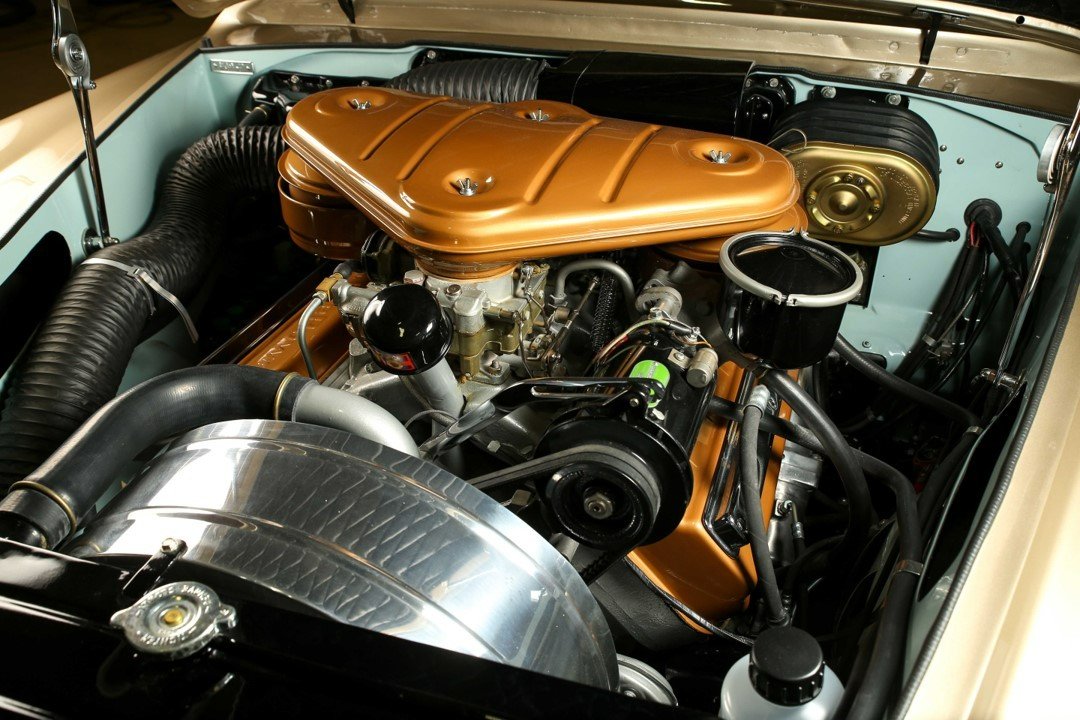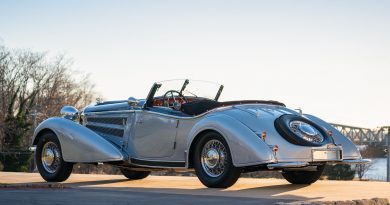1956 Chrysler 300B Special
The Chrysler 300 are high-performance personal luxury cars that were built by Chrysler in the U.S. from 1955 to 1965 and were a sub-model from the Chrysler New Yorker. After the initial year, which was named C-300 for its standard 300 hp (220 kW) 331 cu in (5.4 L) FirePower V8, the 1956 cars were designated 300B. Successive model years were given the next letter of the alphabet as a suffix (skipping “i”), reaching the 300L by 1965, after which the model sequence was discontinued while the “300” remained. At its introduction it was advertised as “America’s Most Powerful Car”.

The 1956 300B was fairly similar externally, distinguished by a new tailfin treatment, but with larger engines, and a choice of two versions of the 354 cu in (5.8 L) Hemi V8 producing either 340 or 355 hp (254 or 265 kW), with a 10:1 compression ratio used to achieve the higher horsepower rating. A companion of this generation was introduced as the DeSoto Adventurer and the Dodge D-500 that were less luxurious, while still sharing much of the mechanicals, giving DeSoto and Dodge a performance enhanced model, while the 354 CID engine was exclusive to the 300, New Yorker and Imperials. The TorqueFlite transmission controls were to the left of the steering wheel and a total of 1,102 were sold. Performance was better than the previous year’s by its top speed at almost 140 mph (225 km/h) at the Daytona Flying Mile. A 6.17 ratio rear differential was also added to the options. Front leg room was 44.6 inches. New was the Highway Hi-Fi phonograph player. This was the last year that coil springs were used for the front suspension.

The car’s “Forward Look” styling can be attributed as much to the Chrysler parts bin as designer Virgil Exner. The front clip, including the grille, was taken from the Imperial of the same year, but the rest of the car did not look like an Imperial. The midsection was from a New Yorker hardtop, with a Windsor rear quarter. Exner tweaked the design to integrate these elements, including fitting base-model Chrysler bumpers, and removing the exterior mirrors for reduced drag at high speeds.


The cabin is trimmed in tan leather with black carpeting. Equipment includes air conditioning, a dash-mounted clock, a locking glove box, and a town and country radio. The front seat has been reupholstered and the carpets were replaced. The three-spoke steering wheel features a chrome horn ring and frames a 150-mph speedometer as well as a combination gauge for fuel level, oil pressure, coolant temperature, and amperage.

The Chrysler 300B cars were the vehicles that really rekindled interest in performance among major American manufacturers after World War II, and thus can be considered the muscle car’s ancestors, though much more expensive and exclusive.




